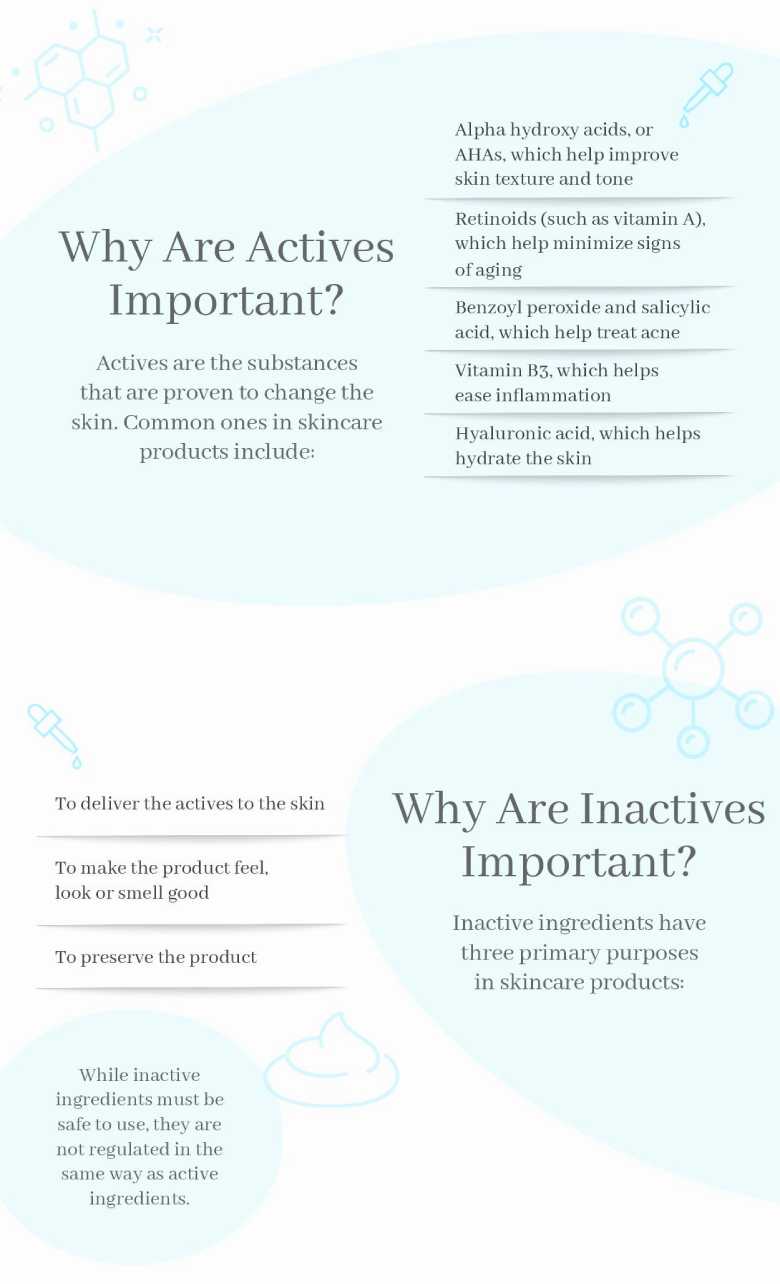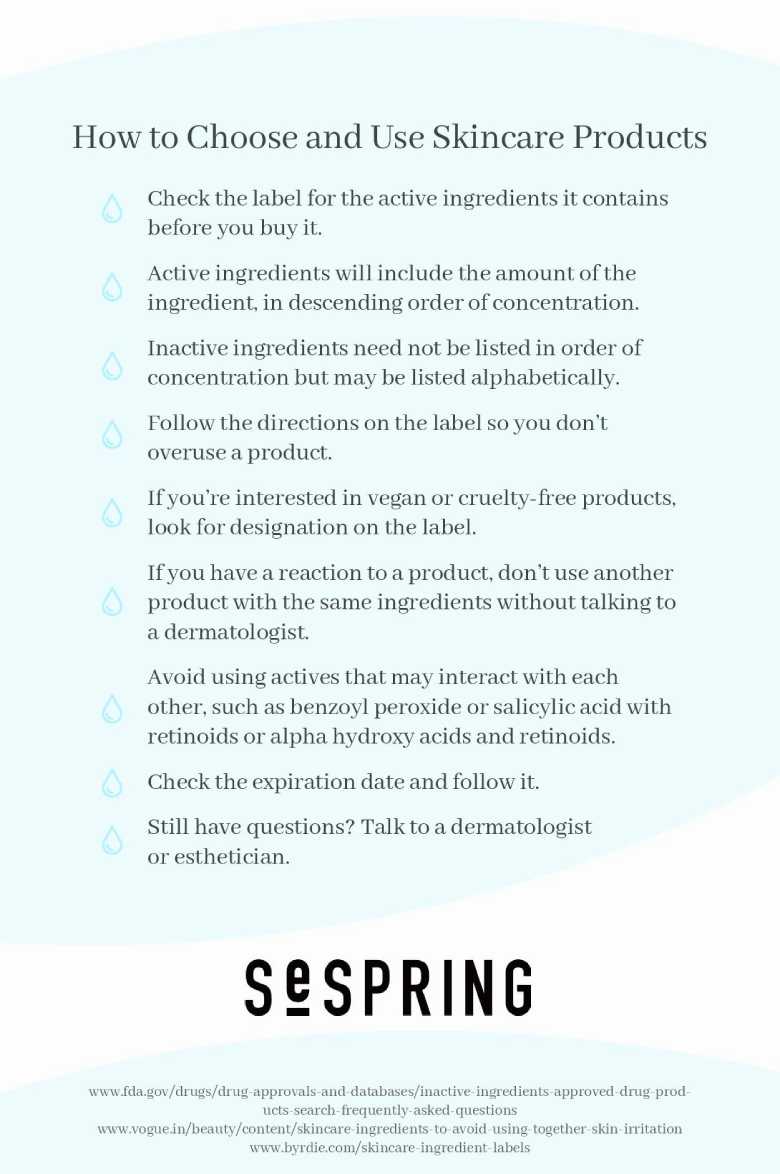Are you a products’ label reader?
These consumers want to know what is in the products they use – especially when putting them on their skin.
Labels of skincare and beauty products offer some great information.
That said, you need to understand some key terms before being sure of what you’re buying.
Ingredient lists on cosmetic labels are typically divided into “active” and “inactive” ingredients.
Understanding what both those terms mean – as well as what they may conceal – can make you a savvier skincare buyer.
Active vs. Inactive (Skincare Ingredients)
The short answer is simple: An active ingredient is one that addresses a specific skin concern.
For instance, a product designed to minimize signs of aging may include retinol on its list of ingredients.
Active ingredients have been shown in lab conditions to change subjects’ skin in some way.
Researchers test ingredients.
If they have the intended effect in studies, they can be added to a product labeled for a particular skin concern.
While everyone’s results are different, these are ingredients with some data behind their claims.
Inactive ingredients seem, on the surface, like they do not affect your skin.
This is not necessarily true.
While there is a minimum requirement from the FDA that these ingredients must not be harmful, there is no requirement that they be inert.
Inactive ingredients can include: fragrances, colors, ingredients to make a cream go on more smoothly, or ingredients to preserve the potency of the active ingredients.
The effects that they have on your skin can be highly individual.
Keeping track of ingredients and how your skin reacts to them can help you make the best choices for making your skin look and feel its best.
In beauty blogs, you’ll see these terms shortened to “actives” and “inactives”.
Actives can refer to specific ingredients or to products that contain an active ingredient.
Inactives are all the other ingredients that support the actives.
Top Types of Active Ingredients
There are skincare products to address all sorts of skin concerns.
Some of the most common you’ll see on the shelf:
• Anti-aging: These products contain ingredients that can reduce or prevent signs of aging.
• Moisturizing: Products that battle skin dryness.
• Anti-acne: Products that can prevent or help heal acne.
• Exfoliating: Products that help remove dead skin.
You’ll also see products with active ingredients that can help soothe skin conditions such as psoriasis, rosacea, eczema, and others.
Why Do Inactives Matter?
The most obvious concern when it comes to inactives is that you may be allergic to an ingredient or that it might irritate your skin.
We all react differently to different ingredients, and it’s important to learn what works best for you.
Many people also like to know more about inactive ingredients because they want to be sure the products they buy align with their values.
Some concerns with inactive ingredients:
• Vegan skincare for those who wish to avoid animal products
• Skincare that is cruelty-free
• Safe products as defined by Environmental Working Group (EWG)
• Sustainable ingredients
Sometimes, seals on labels can give you the information you need.
For instance, the EWG VERIFIED™ label can go on products that meet its strict standards.
In other cases, you may need to do some research to ensure that all the ingredients in the brand you are choosing fit your needs.
Empowered for Better Skincare
Once you understand what ingredients are best for your skin and what ingredients fit your values, you can make more educated purchases.
The more you know, the better the tools in your skincare routine.
Curious to learn more?
Skincare company SeSpring details active and inactive ingredients in the accompanying resource (‘Skincare Ingredients 101’).



The infographic above (Skincare Ingredients 101: Actives vs. Inactives) was created by SeSpring, a manufacturer of a gentle gel cleanser.


Great skincare info!
Like the article…. very informative
Useful information and infographic. I like your beauty and skin care posts.